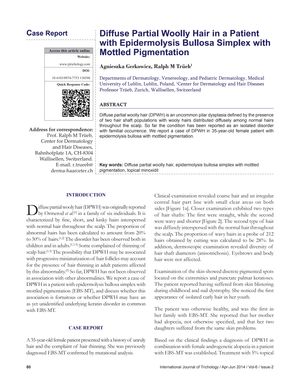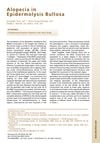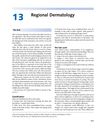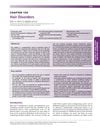Diffuse Partial Woolly Hair in a Patient with Epidermolysis Bullosa Simplex with Mottled Pigmentation
January 2014
in “
International Journal of Trichology
”

TLDR A patient with a rare hair condition and skin disorder showed hair improvement after treatment.
The document reports a case of a 35-year-old female patient with diffuse partial woolly hair (DPWH) and epidermolysis bullosa simplex with mottled pigmentation (EBS-MT). DPWH is characterized by a mix of normal and kinky hairs, with the kinky hairs comprising 20-30% of the scalp hair. This condition had not been previously associated with other abnormalities. The patient, who had a history of hair thinning and was diagnosed with EBS-MT, presented with two types of hair shafts on her scalp and was treated with 5% topical minoxidil solution and 5 mg oral biotin. After six months, she reported improvement in hair density and manageability. The case suggests that DPWH might have an underlying keratin disorder in common with EBS-MT, although further research is needed to confirm any connection.




